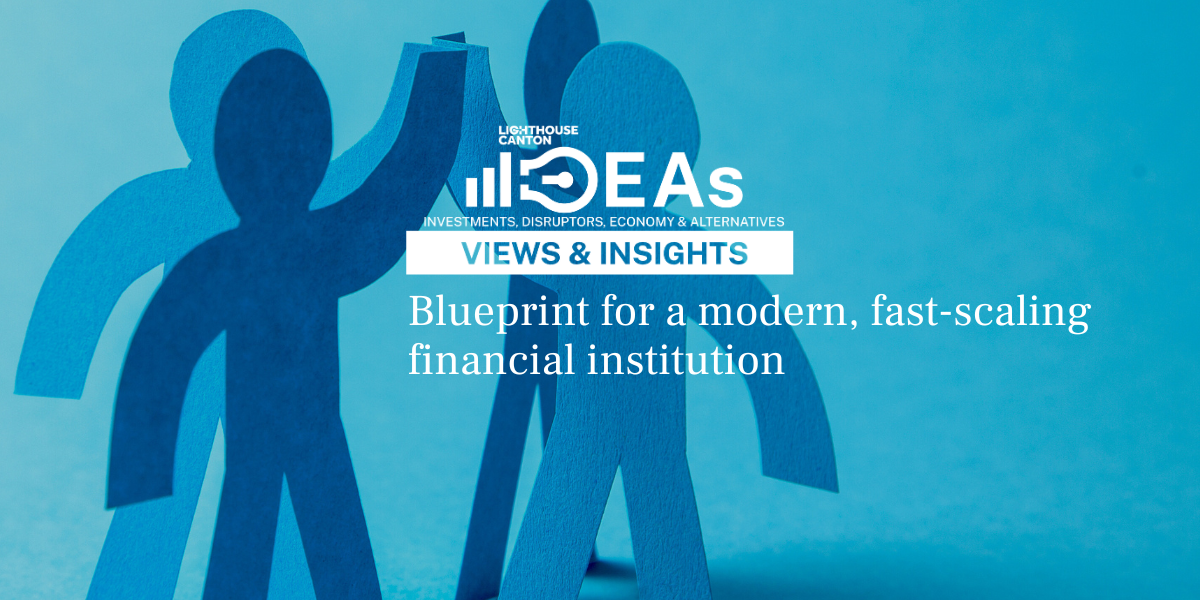A growing cohort of Asia’s family offices is reorienting from capital preservation toward more diversified, performance-driven investment strategies. This comes as both next-generation wealth inheritors and newly affluent business owners push for institutionalisation, global exposure, and alternative asset allocations.
In a recent conversation with LC IDEAs: Views & Insights, Charlene Lin, Managing Director, Strategic Growth (North Asia and Southeast Asia) at Lighthouse Canton, said the shift is being shaped by intergenerational dynamics, capital market developments, and structural shifts in wealth across Asia.
“We’re seeing next-generation family members increasingly drive the investment agenda, and in many cases, they are not just participating—they are actively reconfiguring the family’s risk appetite, diversification strategy, and overall governance frameworks,” she noted.
How significant is the wealth transfer happening?
The 2025 EY Global Wealth Research Report highlights the total value of inherited wealth transfers over the next 20 to 25 years at approximately USD 80 trillion. The consulting firm through its survey also found out that clients increasingly view financial planning for inheritance or wealth transfer as becoming more complex. It has grown to 45% from 31% in just two years.

While first-generation founders remain rooted in operational experience and traditional asset classes, their successors—many of whom have international exposure and professional education—are seeking opportunities in areas such as digital assets, ESG-aligned businesses, and private markets.
“There is naturally friction when it comes to new asset classes like Bitcoin or renewables,” said Lin. “But when the process is professionalised and governed through clear structures, even conservative founders are open to new exposures.”
Read More: Family offices turn to market neutral crypto strategies in search for stable yields
INSTITUTIONALISATION THE INTERGENERATIONAL GOVERNANCE
A defining feature of the evolving family office landscape is the growing demand for independent and structured investment advice that bridges generational and philosophical divides within families.
According to a Deloitte family office insight series report published last year, family offices in Asia Pacific are increasingly turning to outside talent for their recruitment needs, particularly within the C-suite. 43% of family offices are looking to hire additional staff this year, while 38% plan to increase the number of services they provide—an expectation that exceeds the global averages of 40% and 36%, respectively. Furthermore, to scale up their initiatives and gain added expertise, 48% are planning to rely further on third-party service providers

Lin emphasised the importance of a neutral platform that removes personal bias and relationship-based influence during this institutionalisation process.
“At Lighthouse Canton we maintain a professionally managed investment process—free of emotion or internal bias—which is critical in gaining the confidence of both generations. Investment decisions for these relationships are driven by independent portfolio committees within our company and not client-facing team from outside.”
Many families who have built their wealth through operating business tend to value long-term stability and hands-on involvement in their investments—a thoughtful approach that Lin sees brings in some inertia in trying new avenues of investment. In contrast, families with global exposure or more diversified holdings often navigate generational transitions and embrace innovation with greater ease.
Still, Lin sees a promising shift across both groups. Increasingly, next-generation family members are being entrusted with dedicated investment pools to explore emerging asset classes or mission-driven ventures.
“If the next generation shows ambitions and brings in professionals to manage the capital, most principals are supportive—so long as it doesn’t put the core wealth at risk,” she noted.
WHERE IS THE ALLOCATION GOING?
In terms of allocation strategies, Lin said family offices are now actively seeking alpha through non-traditional channels. Private debt, infrastructure, and cross-border alternatives are seeing a marked uptick in interest.
According to UBS’s family office 2025 report, despite ongoing macro and geopolitical uncertainty, family offices increased developed market equity allocations to 26% in 2024 (up from 24% in 2023), with plans to raise it to 29% in 2025. Public markets are being seen as gateways to innovation in areas like generative AI, energy, and longevity. Private debt allocations have also doubled—from 2% to 4%—with expectations to rise to 5% in 2025, offering both yield and diversification benefits.
“Private debt continues to resonate due to its relative stability and risk-adjusted yield, especially in markets like India where the penetration is still low,” Lin said. “The macro rationale in Asia is simple: growing economies, underserved credit markets, and a large consumer base. The potential is still very much intact.”
India has emerged as a favoured investment destination among Asian and global family offices alike. Lin observed a marked increase in allocations to India, rising from sub-5% exposure historically to 10–15% among many of her clients.
“China’s geopolitical headwinds, combined with India’s structural growth story, are prompting families to rebalance their Asia portfolios,” she said. “We are facilitating deeper exposure into Indian credit markets and fund manager-led opportunities, especially for clients unable to operate directly in-country.”
For families seeking better returns without proportional risk, liquidity is increasingly becoming the variable to trade off.
“Clients are asking, ‘How can I achieve higher returns without taking on more risk?’ And the answer often lies in giving up liquidity. If they are large enough, that’s feasible. We call this the golden triangle—balancing return, risk, and liquidity.”
Real estate remains a core holding, but Lin noted that expectations around performance and liquidity sometimes requires recalibration, she noted. Infrastructure investment is also gaining traction, across global markets, including the UK and ASEAN.
“Many families are engaging in infrastructure transactions, particularly in sectors such as hospitality and education. These are long-term, cash-flow stable investments that also align with legacy-building objectives,” Lin added.
Read More: Where are the opportunities in Asia’s private markets & venture landscape?
Read More: Unlocking Asia's Private Credit Potential - Opportunities, Growth and Challenges














.png)
%20(9).webp)
.webp)
